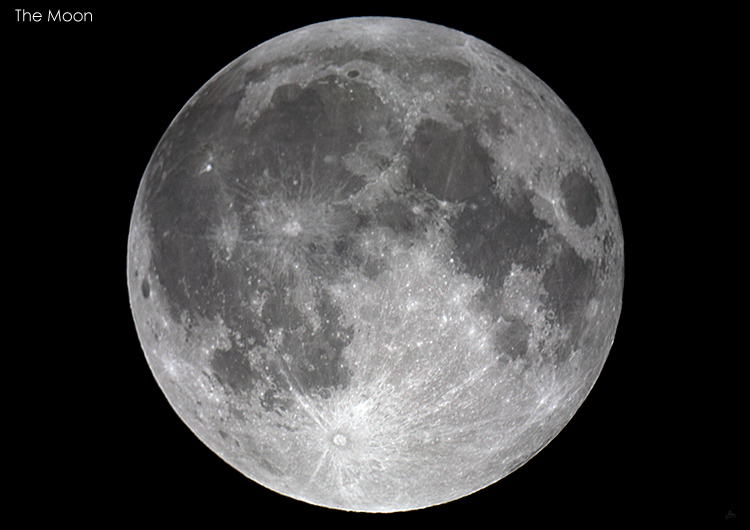|
|
|||
| Perigee Full Moon | |||
|
One side of the Moon's orbit is 30,000 miles closer to Earth than the
other. The two sides are called perigee and apogee, from Greek meaning
"close to Earth" and "far from Earth", respectively. As a result of the
change in proximity, the perigee Moon is about 12% larger in the sky than
the Moon at apogee - a significant size difference.
On 7 September 2006, the perigee full Moon was the largest and brightest of the year. This snapshot was taken hours after a partial Lunar eclipse, using a Canon EOS 5D digital SLR camera at prime focus of an 8" Meade LX200GPS SCT telescope operating at f/10. The Lunar disk extended beyond the size of the full frame imaging sensor of the camera, and therefore two images had to be stitched together to yield the full disk as seen below. The original image resolution is 4,000 x 4,000 pixels in size! This photo was originally taken for my
Digital Photography portfolio.
This is the first astro photograph taken with my Canon EOS 5D digital
camera. |
|||
|
|||








